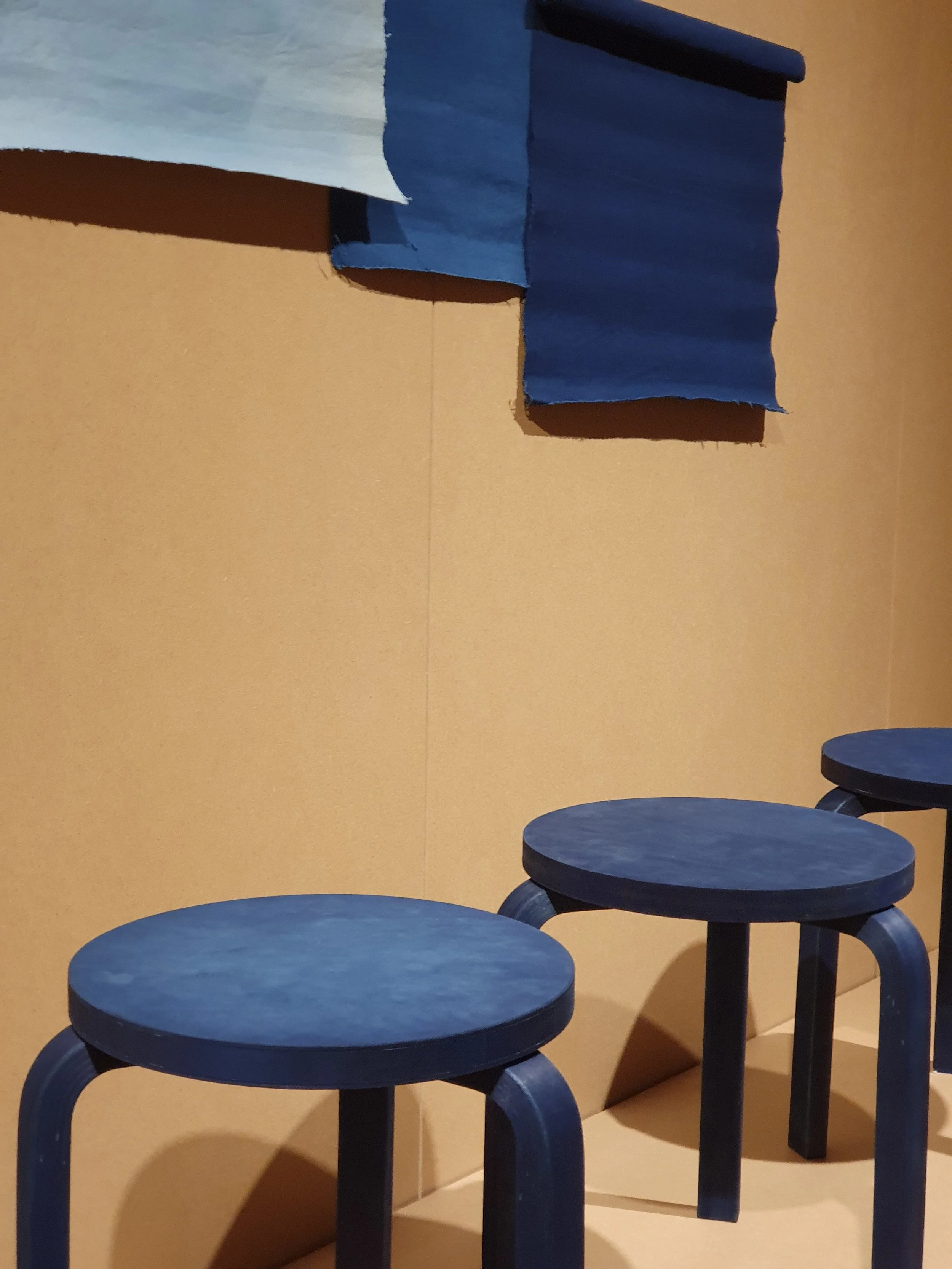the Artek FIN/JPN friendship collection - MDW2019
As Vivian mentioned in an earlier post, last week we visited the Milan Design week with a part of the April and May team. Because we knew that we had to organize our time properly, we made a small planning in advance and it soon became clear that we all wanted to visit the Artek exhibition in the heart of the Design District Brera, where they launched their new FIN/JPN friendship collection.
In collaboration with leading Japanese and Finnish designers, architects and craftsmen, the collection offers interventions on classic Artek products and contemporary designs to mark the 100 year anniversary of diplomatic relations between Finland and Japan. Despite their geographical separation the countries share a deep kinship; both pursue the essence of a simple life, possess an affinity with nature, a love of silence, a reduced visual language and a respect for craftsmanship. The collection is comprised of products that offer thoughtful takes on the similarities and differences between Finland and Japan.
The designs by Aino and Alvar Aalto, Akira Minagawa, BUAISOU, COMPANY, Jo Nagasaka and Koichi Futatsumata were presented in a beautiful installation by Finnish designer Linda Bergroth.
Around 1933 Aino and Alvar Aalto made the acquaintance of Hikotaro Ichikawa, Japanese ambassador to Finland, and his wife Kayoko. Madame Ichikawa gave Aino Aalto a gift of silk fabric with a cherry blossom – “Kirsikankukka” in Finnish - motif. Delighted and inspired, Aino created the Kirsikankukka pattern, evoking spring cherry blossoms, as an homage to Japanese textile art and design. In celebration of the friendship between Finland and Japan, Artek re-introduces a cotton textile with Kirsikankukka pattern. The fabric is printed in Kyoto, at a family owned print-house that specialised in vibrant kimono prints. The pattern is meticulously printed by hand, the silkscreens being placed manually to create a seamless, continuous pattern. This process is known as “Tenasen” and creates slight irregularities, resulting in a pattern that looks beautifully alive.
Artek has a longstanding friendship with Japanese fashion and textile designer Akira Minagawa. The first collaboration between the Finland aficionado Minagawa, founder of Japan-based fashion company minä perhonen, and Artek goes back to 2008, when he transformed the seat of Alvar Aalto’s Stool 60 into a labyrinth. Creating this new collection without his contribution would have been unthinkable for Artek. The result is a book that juxtaposes Minagawa’s drawings with images that inspired them. He moved away from the abstract quality typical of his textile designs, toward a visual dialogue between the world of the Aaltos’ and Minagawa’s own fertile imagination; a beautiful conversation between Minagawa and his heroes Alvar and Aino Aalto. Minagawa. You can admire and read all about the FIN/JPN collection here - Elvera -
“Stool 60 Aizome brings together Alvar Aalto’s iconic design with a traditional plant-based Japanese colouring technique. Indigo dyeing, or “aizome” in Japanese, is a popular process used to create denim and is now applied to turn the stool a characteristic deep blue. Often used in fashion and textile design, the tradition of indigo dyeing is deeply rooted in the Japanese conscious and the vibrant colour it produces is also known as “Japanese blue”. To create this version of Stool 60, Artek partnered with indigo-dye specialist BUAISOU from the Tokushima prefecture. The indigo they use is among the most difficult dyes to produce, highly prized for its beauty, depth of colour and resistance to running. Employing a technique known as “Jigoku date”, which translates as “producing hell”, wood lye, bran and shell-ash are mixed, before fermentation. Stool 60 is dipped in this indigo bath, resulting in a strongly pigmented, deep blue surface that still allows the natural grain of the wood to shine through.
“Inspired by the public bathing cultures of both Finland and Japan, Kiulu Bench typifies the refinement and ability to create new archetypes for which designer Koichi Futatsumata is renowned. Public baths, as both social nexus and cleansing ritual, are deeply embedded in the cultural landscapes of both Finland and Japan, and this connection is taken as the designer’s starting point. A cylindrically shaped bucket, Kiulu in Finnish, is traditionally used in public baths of both countries and stands at the origin of Futatsumata’s bench design. Kiulu Bench serves several functions - as seat and basket, offering storage for items such as towels and cosmetics, magazines or toys. Embodying Futatsumata’s concern with material and eye for detail, Kiulu Bench can find its application in the dry surroundings of the bath/spa/wellness area and beyond.
“What gifts did the Finnish delegation bring to Japan in 1919 to inaugurate Finnish-Japanese diplomatic relations? With this question in mind, Finnish-Korean design-duo COMPANY created their contribution to the FIN/JPN Friendship Collection. The family of six ceramic objects are both decorative and functional; each celebrates a seasonal ritual belonging to the Finnish calendar. Expressive and of disarming naiveté, the family of objects evokes the animist, pagan pasts of Finland. They are hand-made by Artek’s ceramic partner in Portugal, based on a close collaborative development process with COMPANY founders Aamu Song and Johan Olin.”
photos via Artek and snapshots by aprilandmay










